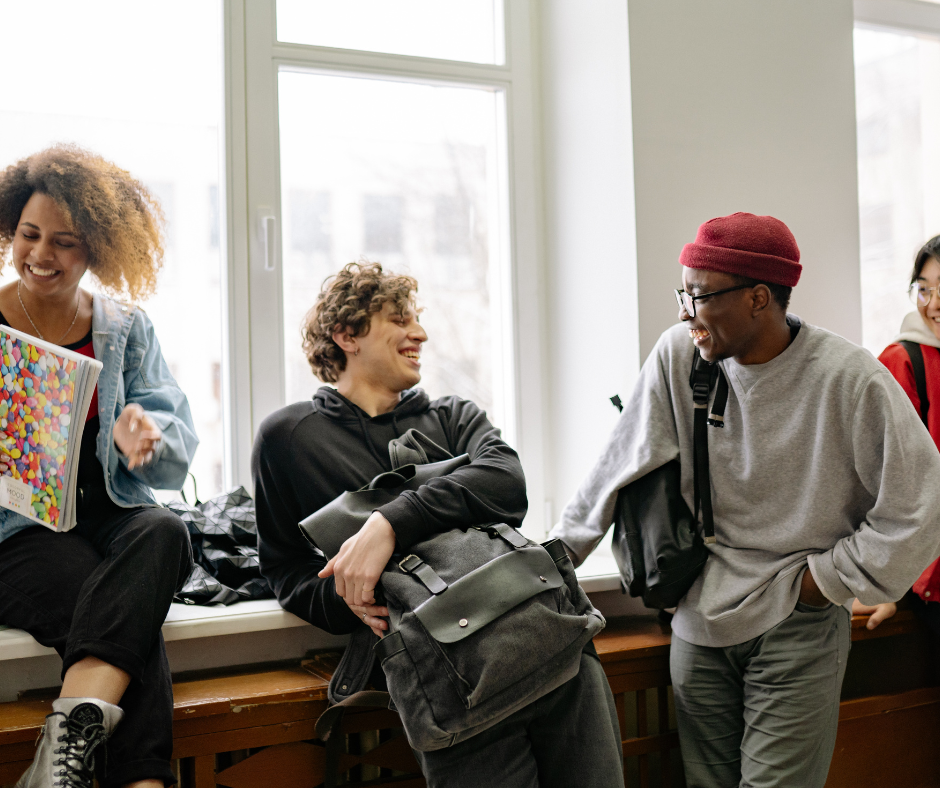Psychology Classics On Amazon

Feeling Connected Enhances Mental And Physical Health
Here Are 4 Research-Backed Ways To Find
Moments Of Connection With Loved Ones And Strangers
A woman and her fiancé joke and laugh together while playing video games after a long day.
A college freshman interrupts verbal harassment aimed at a neighbor, who expresses gratitude as they walk home together.
A man receives a phone call to confirm an appointment, and stumbles into a deep and personal conversation about racism in America with the stranger on the other end of the line.
Each of these scenarios was recalled by a research participant as a moment of meaningful human connection. One’s sense of belonging and emotional safety with family, friends and communities is built through actual interactions. As these examples suggest, these connections can come in a variety of shapes and sizes. Often small and fleeting and sometimes powerfully memorable, moments of connection occur with loved ones and strangers, in person and online.
I spent the past several years exploring moments of connection as a graduate student in psychology, with a particular eye toward how people experienced meaningful connection during the pandemic. It’s not just a little bonus to forge these connections; they have real benefits.
Feeling well connected to others contributes to mental health, meaning in life, and even physical well-being. When loneliness or isolation becomes chronic, human brains and bodies suffer, straining a person’s long-term well-being at least as significantly as major health risks such as obesity and air pollution.
Researchers know what kinds of behavior enhance feelings of social connection. Here are four ways to connect.
1. Heart-to-hearts
For many people, the first thing that comes to mind when asked about meaningful connections are heart-to-heart conversations. These are key moments of emotional intimacy. One person opens up about something personal, often emotional and vulnerable, and in return another person communicates understanding, acceptance and care – what researchers call responsiveness.
For example, I could open up to you about my current experience of becoming a new father, sharing complex and precious sentiments that I would not disclose to just anyone. If I perceive in that moment that you really “get” what I reveal to you, that you accept my feelings as valid, whether or not you can relate to them, and that I matter to you, then I’ll probably feel a sense of closeness and trust.
In emotionally intimate moments, personal sharing is often reciprocal, though a sense of connection can arise whether you are the one opening up or offering responsiveness.

2. Giving and receiving help
A key way that people bond is by giving and receiving support. There are two kinds of social support that often figure in moments of connection. Instrumental support is tangibly helping with the practicalities of a solution. For example, if you bring me groceries when I’m under the weather, we would be bonding through instrumental support.
Emotional support is nurturing another’s feelings. If you dropped by to give me a hug when I’m stressed out, this would be emotional support.
Either way, your actions are responsive: You understand my situation and by taking action you show that you care.
While it’s perhaps no surprise that you might feel connected when someone offers you responsive kindness, it works in the other direction too. Supporting others builds that feeling of connection, especially if you sincerely want to help and feel your aid is useful.
To be effective, though, you need to be responding to another person’s needs rather than your own idea of what they need. Sometimes this means offering emotional support to help another person calm down so they can tackle their own problem, despite your own desire to jump in and solve the issue for them.
3. Positive vibes
Vulnerability and support are no joke, but meaningful interactions need not be somber. Research shows that people gain a sense of connection by experiencing positive emotions together. And this sense of connection is not only in your mind. When two people share this kind of good vibe, their bodies coordinate too. They synchronize, with simultaneous gestures and facial expressions, and even biomarkers such as heart rate and hormones shifting in similar patterns.
Human beings rely on these positive, synchronous moments as a basic connecting force beginning in infancy, and people continue to seek out synchronous interactions throughout life. Think of enjoyable activities like singing and dancing together – they’re embodied forms of connection that actually release endorphins that help you feel bonded. Same goes for laughing together, which comes with the bonus that a shared sense of humor suggests a similar sense of reality, which enhances connection.
When someone tells you about a positive event in their life, a reliable way to enhance bonds is to sincerely and enthusiastically respond to their good news: celebrating, congratulating, saying “I’m so happy for you.”

4. Affirming expressions
Those moments when you let people know how much you appreciate, like or love them can be brief but powerful. Expressing and receiving affection and gratitude are especially well-researched means of bonding. Outright manifestations of affection can come in the form of direct verbal declarations, like saying “I love you,” or physical expressions, like holding hands.
Imprecision and imperfection
Attempts at connection can be complicated by two people’s individual perceptions and preferences.
Humans aren’t mind readers. Anyone’s sense of what others think and feel is at best moderately accurate. To feel connected, it’s not enough that I genuinely understand you or care for you, for example. If you don’t perceive me as understanding or caring as we interact, you likely won’t walk away feeling connected. This is especially an issue when you’re lonely, because loneliness can lead you to view your interactions in a more negative way.
Each person also has different preferences for ways of connecting that more reliably help them to feel bonded. Some people love to talk about their feelings, for example, and may gravitate toward emotional intimacy. Others may open up only with those they deeply trust, but love to connect more widely through humor.
Of course, not all interactions need to be meaningful moments of connection. Even well-bonded infants and caregivers, in that most vital of relationships, are in an observable connected state only 30% of the time.
Moments of connection also need not be extravagant or extraordinary. Simply turning your attention to others when they want to connect yields great relationship benefits.
Gaining insight into various ways of connection may allow you to practice new ways to engage with others. It may also help you simply pay attention to where these moments already exist in daily life: Savoring moments when you feel close to others – or even just recalling such events – can enhance that sense of connection.![]()
Dave Smallen, Community Faculty in Psychology, Metropolitan State University
This article is republished from The Conversation under a Creative Commons license. Read the original article.
Recent Articles
-
Best Psychology Books for Beginners
Dec 04, 25 07:44 AM
Learn about the mind and behavior with our top picks for the best psychology books for beginners. Start exploring this fascinating field now! -
Best Study Tips for Psychology Students: How to Learn More Effectively
Dec 04, 25 07:16 AM
Discover the best study tips for psychology students. Learn proven techniques, study plans, and habits that make psychology easier, clearer, and more rewarding. -
Why Rage Bait Works: The Psychology Behind Online Outrage
Dec 04, 25 06:11 AM
Discover why rage bait spreads so quickly, the psychology behind engineered outrage, how algorithms amplify it, and what you can do to avoid getting hooked.
Please help support this website by visiting the All About Psychology Amazon Store to check out an awesome collection of psychology books, gifts and T-shirts.





